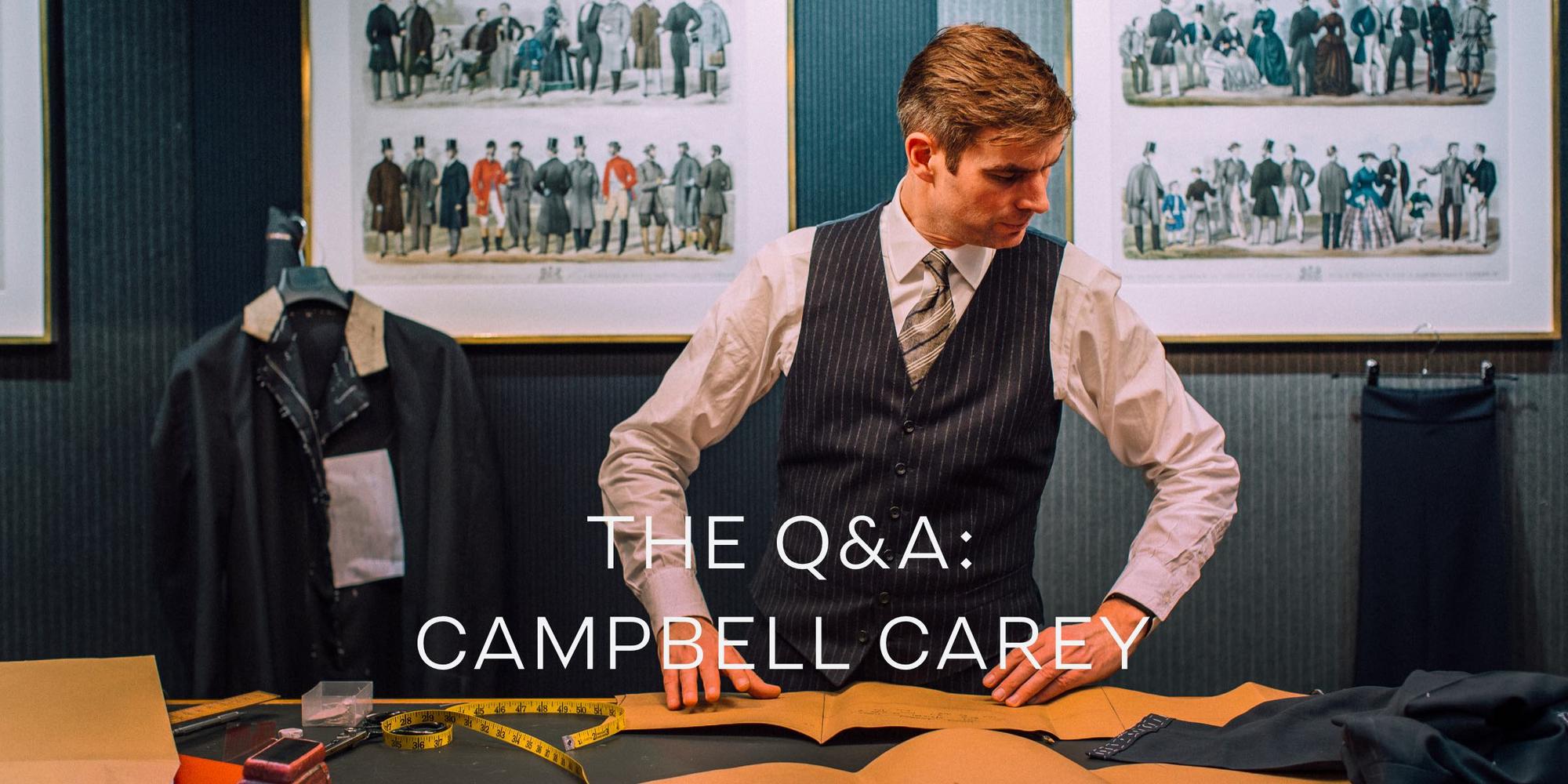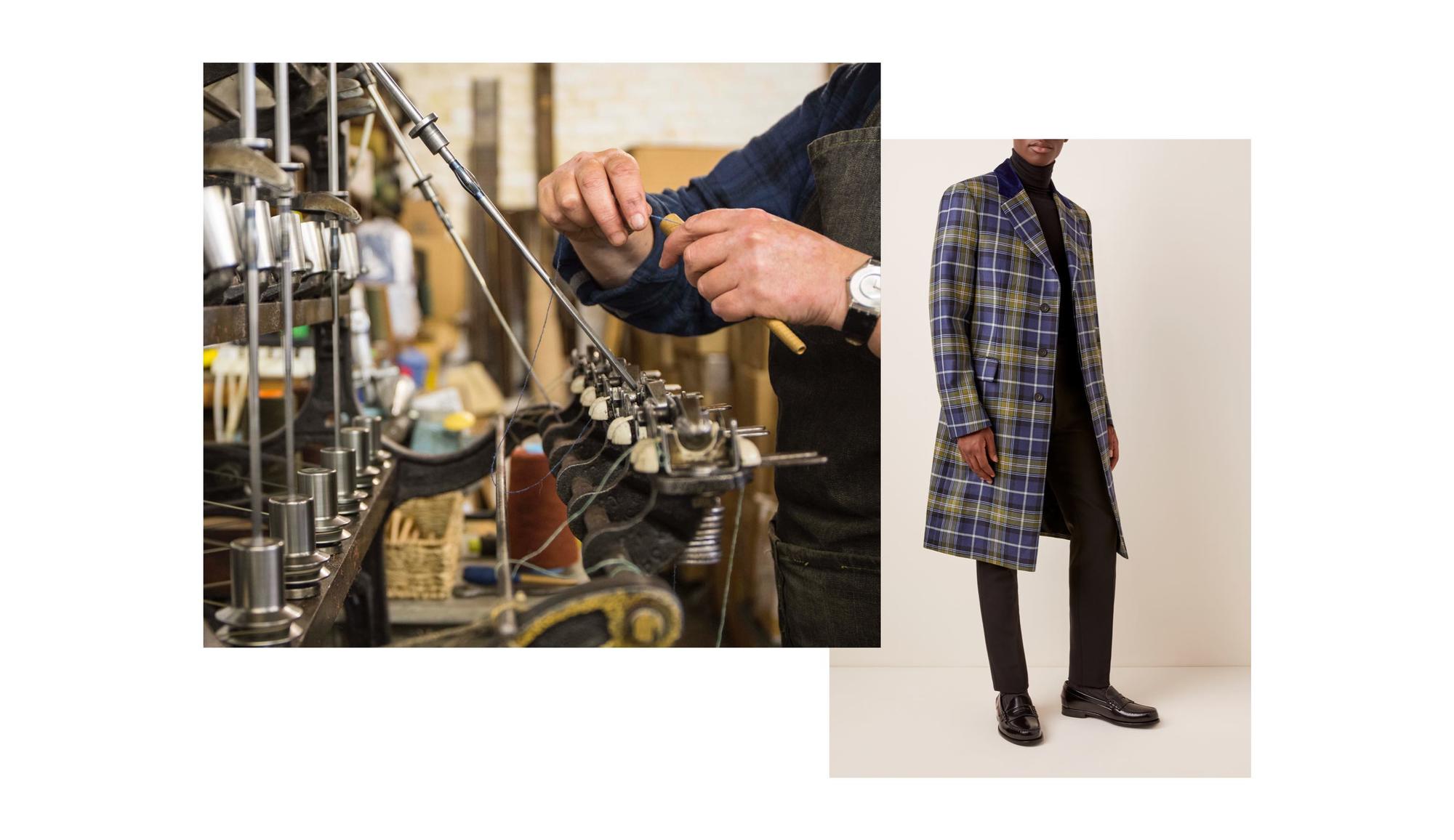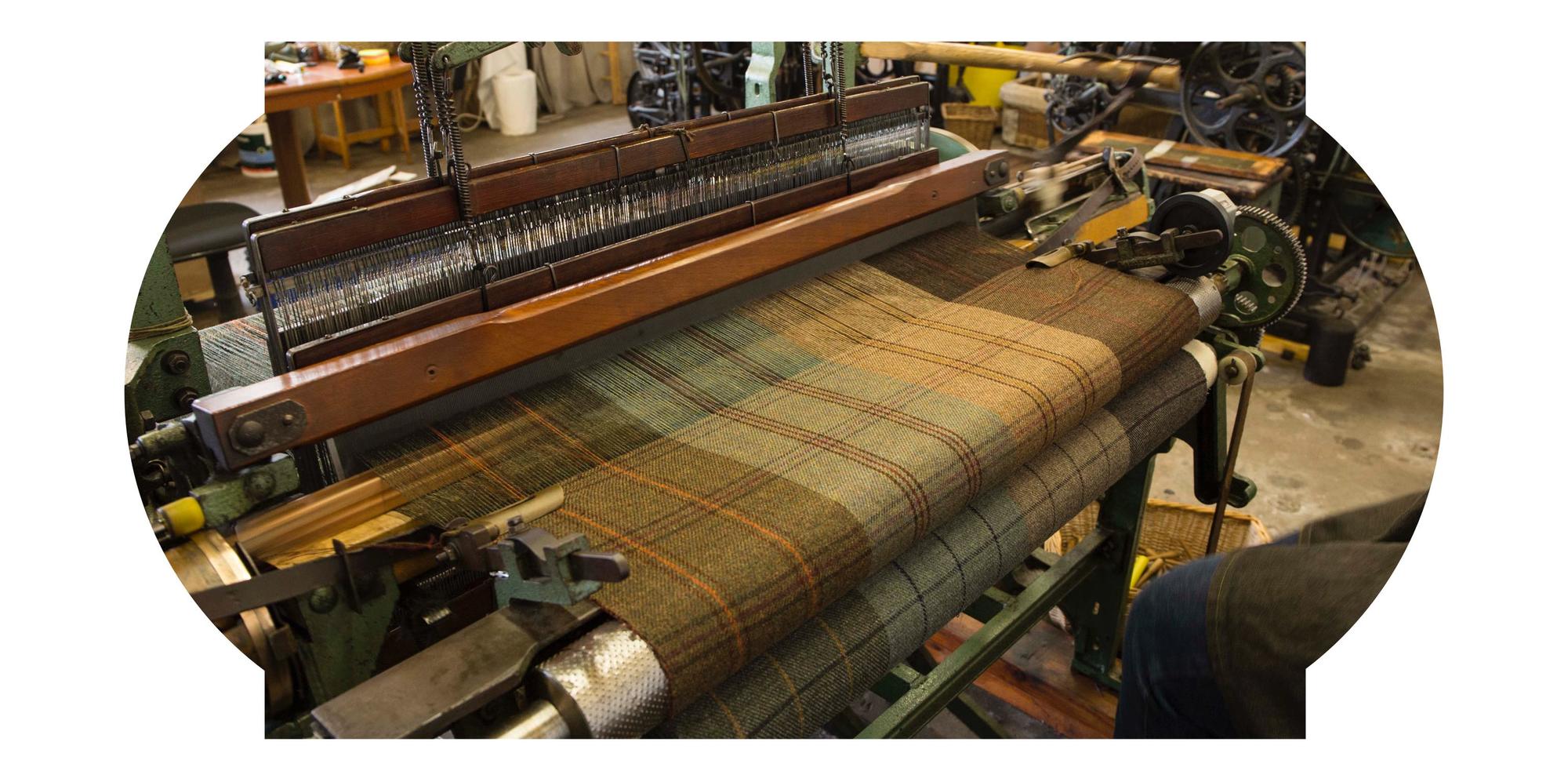In the realm of men’s tailoring, few establishments carry as much weight as those situated on Savile Row. Located in London’s Mayfair district, the storied street is where the term “bespoke” first originated, and is now home to some of the world’s most revered tailors—of which H. Huntsman & Sons is among the most noteworthy.
The house was founded in 1849 by Henry Huntsman–and soon after its move to Savile Row–became known for dressing the British and Hollywood royalty alike, amassing such clients as Hubert de Givenchy and Cecil Beaton. Today, Huntsman’s unflinching commitment to craft has earned it global recognition, reputed for cutting the best suits in the business.
In a first-of-its-kind collaboration, we’ve partnered with the esteemed Savile Row house to develop a capsule of four garments, each cut from a tartan, custom-developed and woven by Huntsman, that incorporates Moda’s new brand colors. To celebrate the launch—available exclusively on Moda—we sat down with Huntsman’s Creative Director and Head Cutter Campbell Carey to discuss the value of heritage, his favorite piece from the capsule, and why you should never dry clean your suit.
INTERVIEW BY TYLER SPARLING
The house was founded in 1849 by Henry Huntsman–and soon after its move to Savile Row–became known for dressing the British and Hollywood royalty alike, amassing such clients as Hubert de Givenchy and Cecil Beaton. Today, Huntsman’s unflinching commitment to craft has earned it global recognition, reputed for cutting the best suits in the business.
In a first-of-its-kind collaboration, we’ve partnered with the esteemed Savile Row house to develop a capsule of four garments, each cut from a tartan, custom-developed and woven by Huntsman, that incorporates Moda’s new brand colors. To celebrate the launch—available exclusively on Moda—we sat down with Huntsman’s Creative Director and Head Cutter Campbell Carey to discuss the value of heritage, his favorite piece from the capsule, and why you should never dry clean your suit.
INTERVIEW BY TYLER SPARLING


You’ve been on the Row for nearly two decades now. How did you first get your foot in the door in the industry?
I graduated from the Scottish College of Textiles in 1998 and immediately started working at Kilgour, who are really up there with the elite on Savile Row. I left there in 2009 to take over Hayward until 2011. I then went back to Kilgour for about 18 months, always kind of knowing that Huntsman was the endgame. And in 2014, I finally got the chance to join as head cutter, and now as creative director.
What’s it like having so much experience in such a specific sector of the menswear industry?
You really start to take it for granted, honestly. Having really personal relationships with not only your customers, but your suppliers as well is just so special, and you forget sometimes that that really isn’t the same for so many other people in the same industry.
Can you tell me a bit about the history of Huntsman?
It was founded in 1849 by Henry Huntsman, and moved officially to Savile Row in 1919—we actually just celebrated our centennial. If you look back at the ledgers, you see names like Coco Chanel, Givenchy, people who could literally go anywhere to get their clothes—they could even make their own—but they came to Huntsman. It really comes down to people who have endless choices when it comes to their clothing—really an elite group—yet who still come to Huntsman to get the best.

What does the word “heritage” mean to you?
To me, it’s that feeling you get as soon as you walk through the door, that you’re stepping into history. You feel all of the people that have walked before you, and you know you want to do right by them.
What is it that makes a Huntsman suit unique?
We’re working closely—more so than anyone else on Savile Row—with the mills that produce our fabrics. Most of the other houses work with the same mills to get the same fabrics that are then house-cut, but we weave our own fabrics. So when you see a Huntsman jacket, you know that there are only so many of those walking around on the planet.
Would you describe the process of cutting a suit as a science or an art?
A bit of both definitely. We’re using science because we use da Vinci’s method of splitting the body into eight heads to come up with the waistline and the length of the jacket. We then use scale to decide the proportions, up until the artistic eye takes over, which is what we call “rock of eye.” It’s an old cutter’s term that refers to the point when you ignore the measurements a bit and trust your intuition to make the final adjustments.
What’s the proper way to care for a suit?
Like a pair of shoes, you want to rest them. I always say you want to give your suit at least 24 hours of rest before wearing it again. And always have it hand-pressed and not dry cleaned. Dry cleaning uses chemicals that strip all of the natural oils out of the fabric.
Can you pick a piece from the capsule and tell me how you would wear it?
The Chesterfield is the one for me. I would wear that with a navy roll-neck sweater, some Japanese selvedge denim, brown suede chukka boots, and a navy scarf. It would be the perfect balance of polished and relaxed.